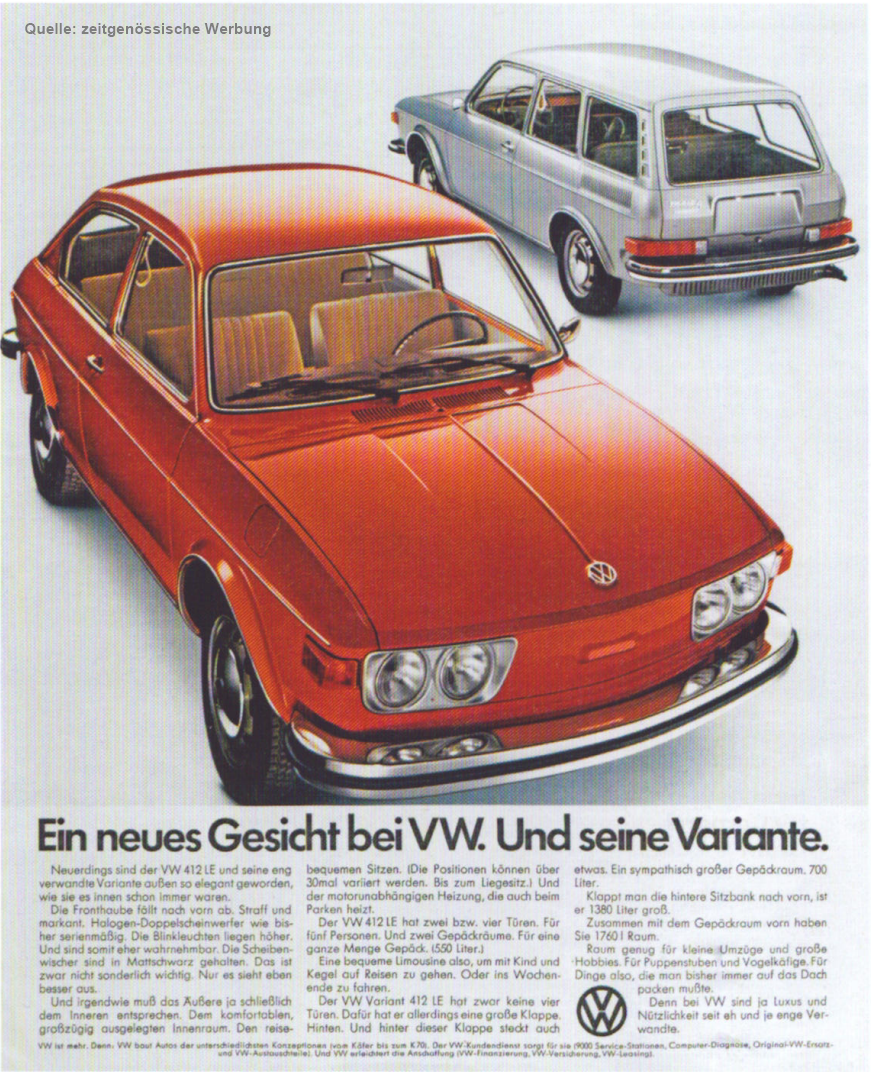The VW Type 4 was initially presented internally during the VW general meeting on July 4, 1968. This was followed by the dealer presentation in Braunschweig. And finally, the official premiere of the sedan took place at the Industrial fair Berlin in September 1968. Delivery to the trade started on October 5, 1968.
Production of the 411 took place at the Wolfsburg plant from September 1968 to June 1972.
Initially, the VW 411 was produced as a two- and four-door model. In the first year of production, the Zyklop version – named after the oval headlights – was sold first. Initially, these vehicles were only available in a hatchback version with a small tailgate. Buyers could choose between the normal and L versions.
An air-cooled 1.7l boxer engine with two carburettor system, 68 hp at 4500 rpm, spring strut front axle with torsion bar stabilizer, semi-trailing arm rear axle, four-speed manual transmission, additional petrol-electric heater, radial tires 155 SR 15, three-phase alternator were standard.
There was an automatic transmission as an option.
The L equipment included carpeting instead of rubber mats, reclining seats with lumbar support, velor seat covers and pockets in the backrest.
The first vehicles were delivered in October. At the same time, insulation panels for the wheel housings in the engine compartment were retrofitted.
Photo source: motor tourist No. 8 v. Aug 1968










